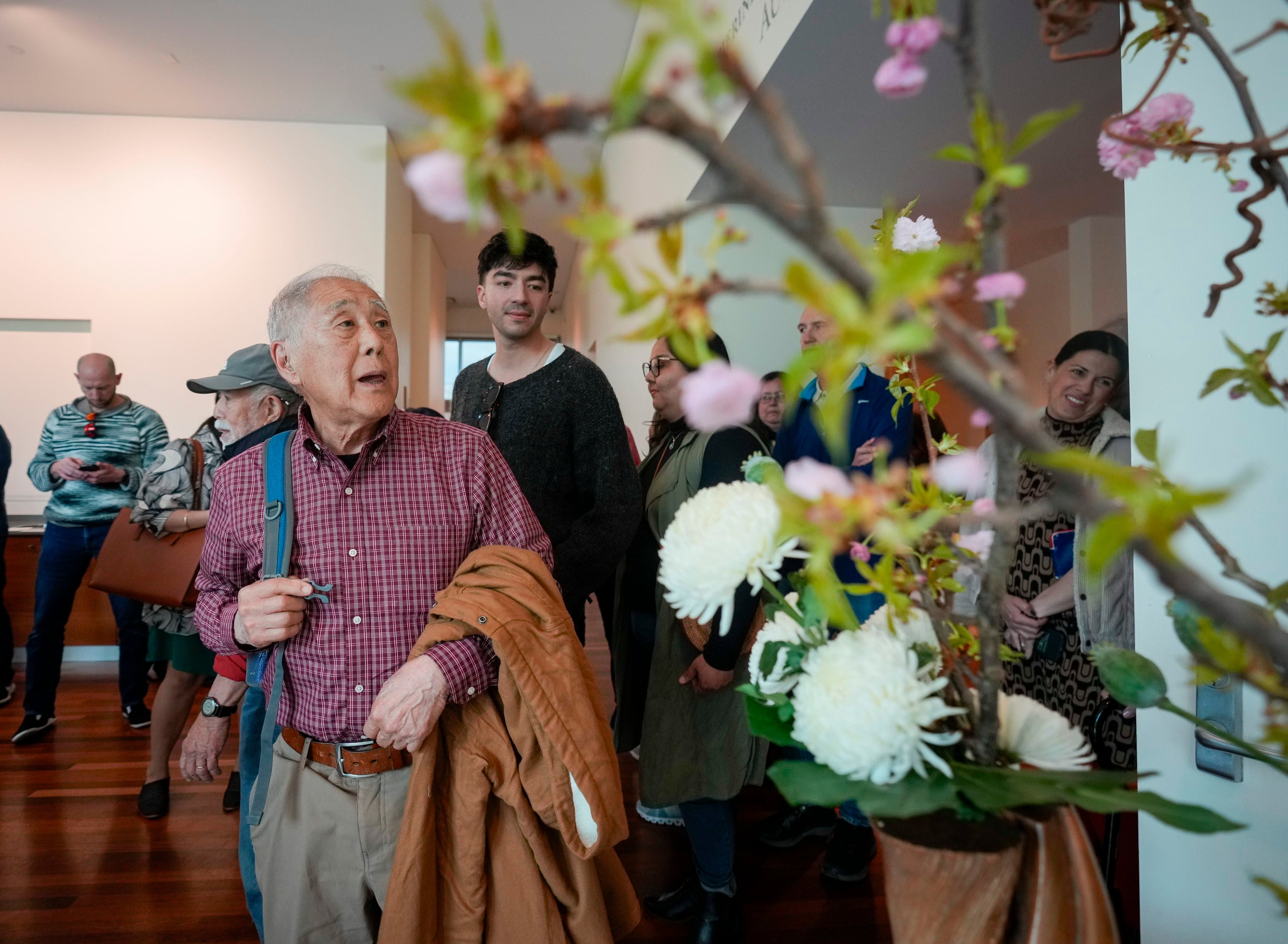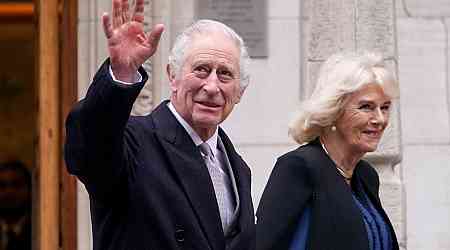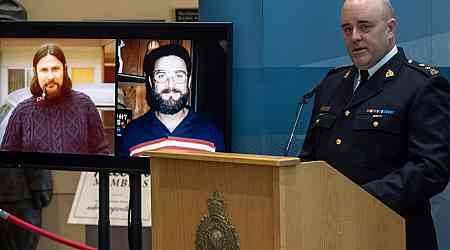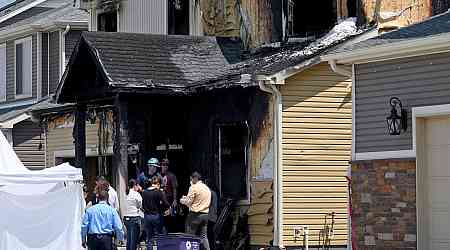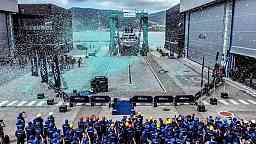Lisa Hernandez came to Utah from Los Angeles with a copy of her mother’s birth certificate.
“She was born in Topaz,” Hernandez said Friday. “I found her birth certificate from Topaz, and it says the parents’ color and race or whatever: Yellow.”
Hernandez and her daughter, Yoshino Jasso — who was named after her great-grandmother — were among some 80 descendants of Japanese Americans who gathered Friday at the Utah Museum of Fine Arts as part of an annual pilgrimage to the site of the Topaz War Relocation Center near Delta.
Thousands of Japanese people and Americans of Japanese ancestry were incarcerated at Topaz during World War II, under a federal order.
Hernandez also has photos on her phone of her mother and family at Topaz. Hernandez said she has visited Topaz before, but this trip was special because her daughter is with her and can learn more about their family’s history.
“I couldn’t resist, [with] my daughter turning 30 and her being named after my grandmother,” Hernandez said. “My mom passed away last year, so I thought, ‘One-year anniversary: that’s just perfect.’”
The first pilgrimage to Topaz was organized in 1993, said Jane Beckwith, the founder and a board member of the Friends of Topaz Museum — which has been open since 2017.
“Of course, the journey means different things to different people,” Beckwith wrote in an email.
“To those who were there, it was always a reminder of what happened to them due to prejudice, war hysteria, and failure of political leadership,” Beckwith wrote. “To those who either had family members there or friends, the place reflects the hardships provoked by bad judgment, and at the same time the admirable resilience of those who were there. Most people vow to oppose this sort of tragedy, so it will never happen again.”
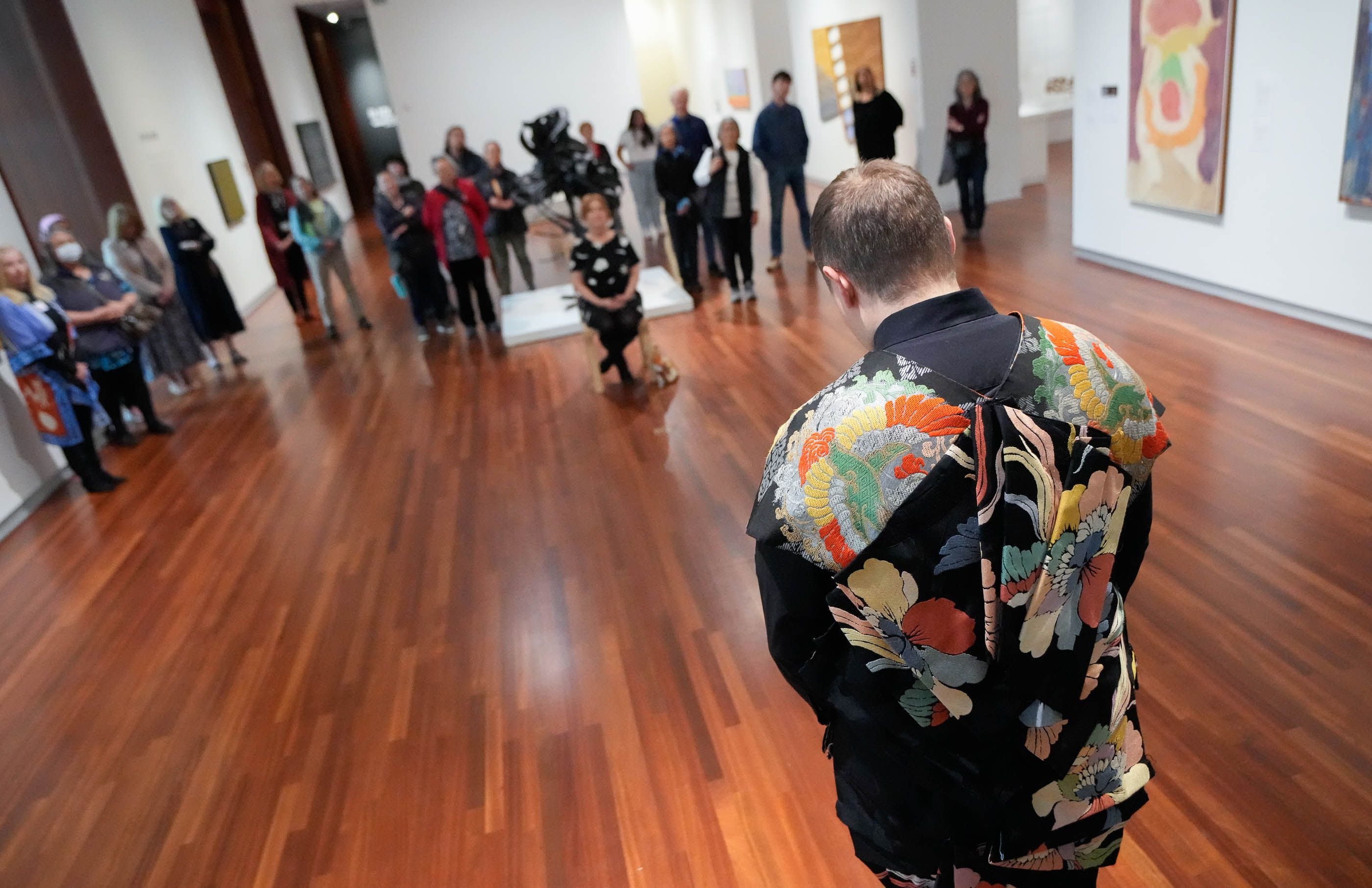
An emphasis on art
This year’s pilgrimage started at UMFA, on the University of Utah campus, to see an exhibition there, “Pictures of Belonging.” The exhibition, curated by ShiPu Wang, chronicles the life and work of three Japanese female artists: Miki Hayakawa, Hisako Hibi and Miné Okubo. Some 100 artworks, some of them never on display before, are part of the exhibition, which is at UMFA through June 30 on the first stop on a national tour.
Karen Shimamoto came to the pilgrimage from Reno, with her sister and brother-in-law. Her father’s family was incarcerated at Topaz — so when they learned the pilgrimage would be coupled with “this amazing exhibit of the Japanese-American artists associated with the camp,” she said, they jumped at the chance to come.
“This assemblage of heart, emotion, visual meaning and music … was pretty amazing. It was very enlightening,” she said.
Those visiting Friday also heard classically trained singers, including Sam Plumb from the University of Utah, singing in the gallery, as part of the “Sonic Blossom” exhibit. There also was a screening of a 14-minute film about landscapes of Yosemite National Park created by artist Chiura Obata — who in 1942 was interred with his family at Topaz, where he taught art classes and created watercolors of the scenes there.
“What he did from the very first day was begin to plan an art school,” said Kimi Hill, Obata’s granddaughter and the family’s historian, who has been working with UMFA. “That art education and having a creative outlet is just so important to give humanity and power to the individual. He firmly believed in the power of creativity and the creative arts.”
Visitors also listened in rapt attention to Luke Kelly, UMFA’s associate curator of collections, as he described the restoration efforts on one of Obata’s largest works, the 1923 four-paneled screen, “Two Running Horses,” which UMFA acquired in 2022.
This year’s pilgrimage has a particular emphasis on art, Hill said — so starting with the exhibition was “perfect timing.”
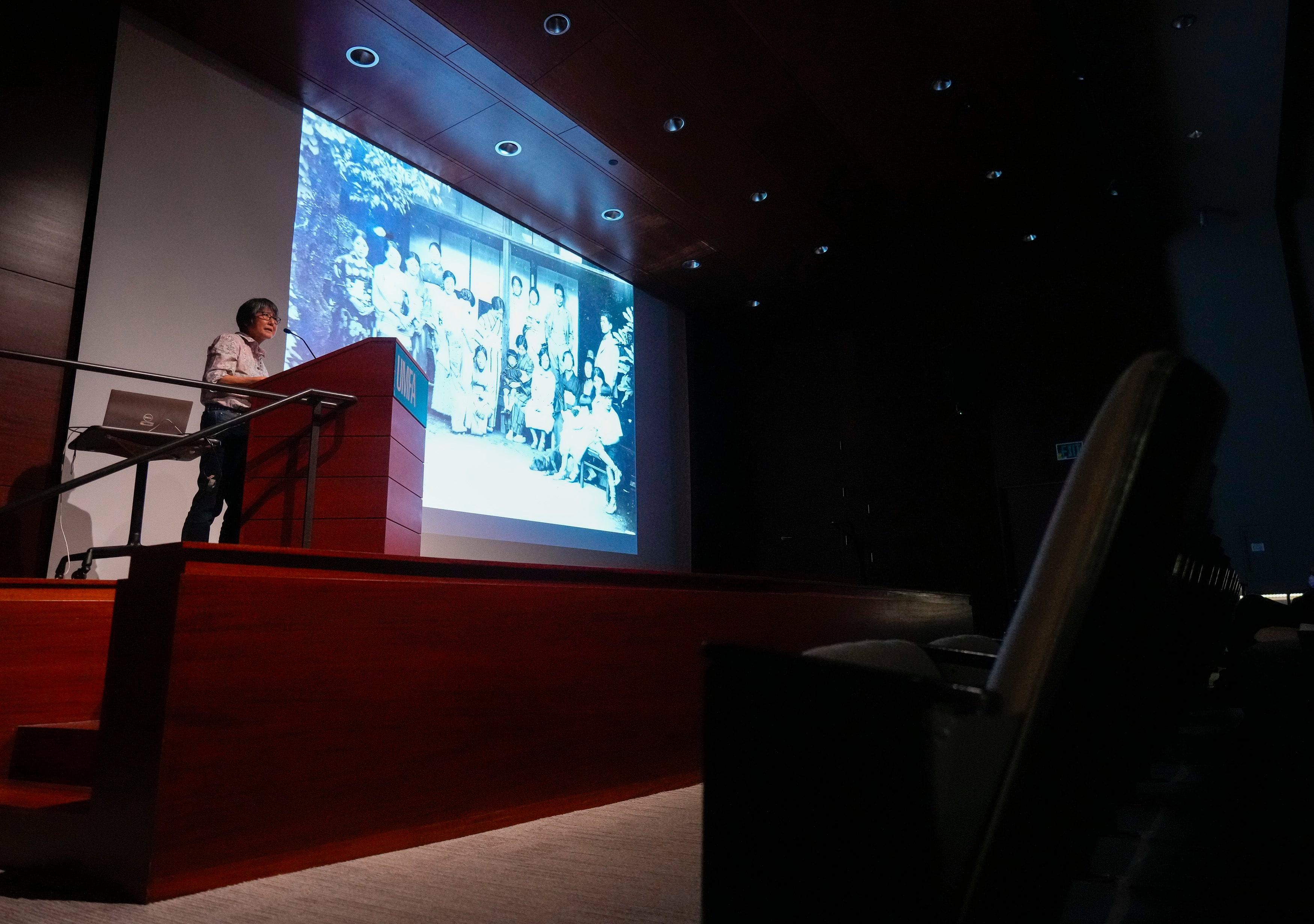
The art collected in the “Pictures of Belonging” exhibition spans the lifetimes of Hayakawa, Hibi and Okubo — before, during and after World War II. Hibi and Okubo were imprisoned at Topaz, and some of their art captures their time there.
Wang said he has been familiar with the work of the three artists for more than 20 years. He has rediscovered artwork in each of their private collections, and worked with their living family members, such as Hibi’s daughter and Okubo’s niece. Some of the pieces from the show are directly borrowed from Hibi’s estate.
“They’re always sort of at the back of my mind, because I realized that, ‘Oh, they were very active: They’re winning awards and showing with everybody else, yet there’s very little about that,” Wang said.
With this exhibition, Wang said he wanted to show the range and complexity of each of their careers, using the artwork to “bring out those nuances and different textures of their lives.”
“It’s not just about the biography, not about their life stories only, but also the art itself: the talent, skills, variety, and dedication to their craft,” Wang said.
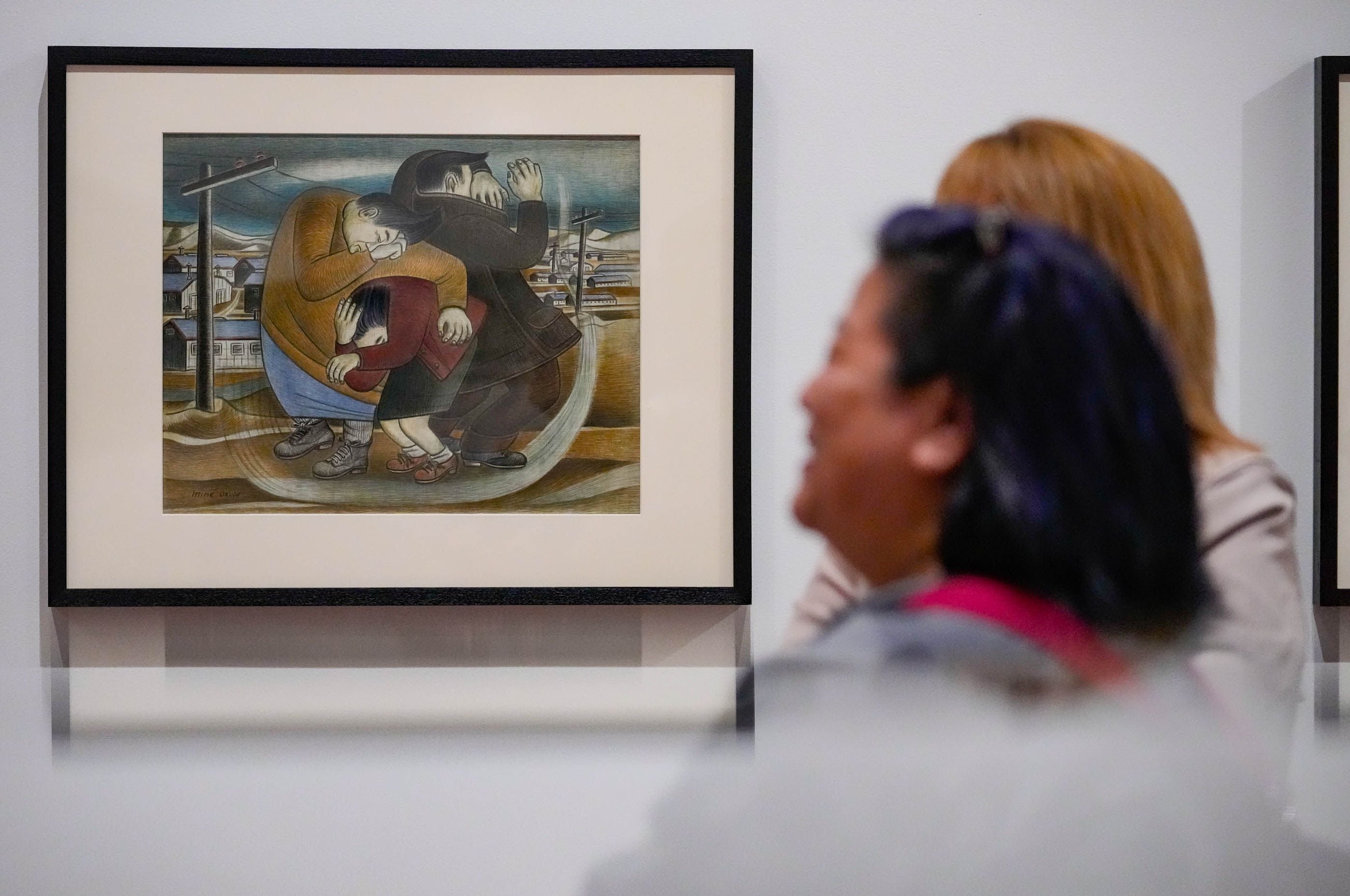
Wang said he also wanted to make sure the exhibition didn’t exclusively focus on the “injustice and trauma” the artists faced during World War II.
“It’s very important to continue to learn about it, which is why we have annual events to continue to learn about that history lesson,” Wang said. “But the downside of an exclusive spotlight is that you forget they had a great career before the war and they had a great career after the war.”
Hill said that “to see the artwork that was created while this community was imprisoned in this camp, only two hours from Salt Lake City, it’s very moving.”
Hill said she agrees with the sentiment of looking at the full picture of the lives of those who were imprisoned — an estimated 120,000 people, imprisoned at 10 camps scattered across the Western United States.
“I always tell people there are 120,000 different stories,” Hill said, “because 120,000 people were affected.”
